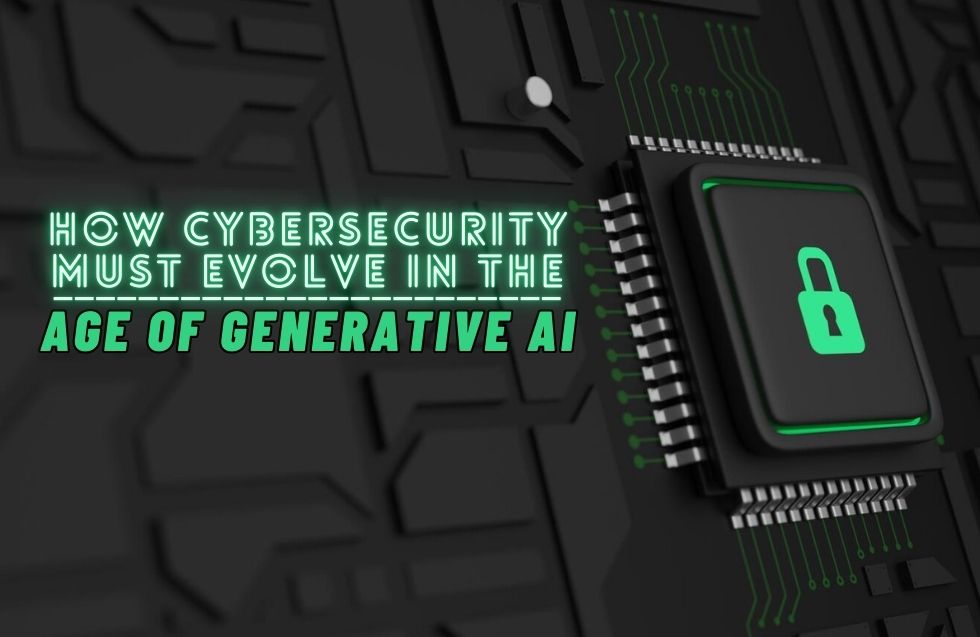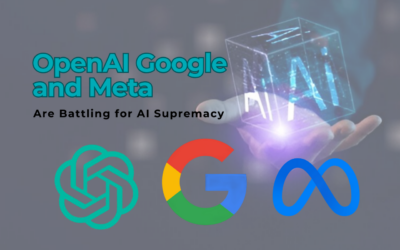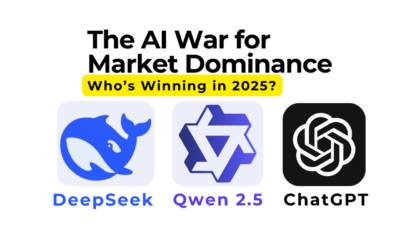As we continue to embrace the Fourth Industrial Revolution, characterized by rapid technological advancements, one of the most transformative developments is the rise of Generative AI. Generative AI refers to artificial intelligence systems that can create content, from text and images to deepfakes and code. This breakthrough is revolutionizing industries such as healthcare, media, and customer service. However, alongside its potential for innovation, Generative AI also presents unprecedented challenges for cybersecurity.
In a world where AI can be used to create both beneficial and harmful content, businesses must rethink their approach to cybersecurity. Traditional cybersecurity measures, while essential, are not equipped to deal with the unique risks posed by Generative AI. This article will explore how cybersecurity must evolve in response to the growing influence of Generative AI, the new threats it introduces, and how organizations can adapt their strategies to stay ahead in this rapidly changing landscape.
The Power and Peril of Generative AI
Before delving into how cybersecurity must evolve, it is important to understand the power and scope of Generative AI. Generative AI models, such as OpenAI’s GPT, DeepMind’s AlphaFold, and DALL-E, have demonstrated their ability to generate highly sophisticated content. These models can:
- Write convincing text that mimics human writing.
- Generate realistic images, videos, and audio.
- Create deepfake videos that replicate a person’s likeness with stunning accuracy.
- Write software code, sometimes even better than novice programmers.
This ability to generate human-like content has tremendous potential for productivity and innovation. For example, Generative AI can automate routine tasks, assist in scientific discoveries, and help design new products. However, the very features that make Generative AI so powerful also create new cybersecurity risks. Cybercriminals are now using Generative AI to develop more sophisticated attacks, exploit vulnerabilities, and deceive individuals and businesses.
The New Cybersecurity Threats Posed by Generative AI
With the advent of Generative AI, the cybersecurity landscape is witnessing an alarming rise in novel threats. Some of the most significant threats include:
1. AI-Powered Phishing and Social Engineering Attacks
Phishing attacks have long been a staple of cybercrime, typically involving deceptive emails or messages that trick recipients into divulging sensitive information. However, the sophistication of phishing attacks is skyrocketing with Generative AI. AI can be used to craft highly personalized and convincing phishing emails, making them harder for both users and traditional email filters to detect.
Generative AI models can also mimic human writing styles and personalities, making social engineering attacks far more persuasive. IBM’s 2022 Cost of a Data Breach Report highlighted that phishing remains the most common attack vector, with AI-powered phishing likely to exacerbate this trend. Furthermore, AI can analyze vast amounts of personal data to create hyper-targeted attacks that exploit specific individuals’ behaviors or preferences.
2. Deepfakes and Synthetic Media
Deepfake technology, powered by Generative AI, allows the creation of hyper-realistic videos and audio clips of individuals that can be used maliciously. Deepfakes have been employed in various scams, including impersonating CEOs to authorize fraudulent transactions, a phenomenon known as Business Email Compromise (BEC). The FBI has already issued warnings about deepfake scams costing businesses billions of dollars globally.
The creation of deepfake media presents a significant challenge for cybersecurity teams, as traditional authentication methods such as facial recognition or voice verification can be fooled by these AI-generated simulations. This not only jeopardizes sensitive financial transactions but also undermines trust in digital communication, creating widespread uncertainty about what is real or fake.
3. AI-Generated Malware
Generative AI is also being used to create more sophisticated forms of malware. Traditionally, developing malware requires advanced programming knowledge and time-consuming efforts. However, AI can automate and optimize this process, generating new types of malware that can evade detection by conventional cybersecurity defenses. According to a 2023 Microsoft Security report, AI is being used to design malware capable of adaptive behavior, making it more difficult to detect and neutralize.
Generative AI can also help attackers create zero-day exploits, which target previously unknown vulnerabilities in software systems. These exploits pose a serious risk because they can infiltrate systems before developers have had the opportunity to patch them.
4. Data Poisoning Attacks
As organizations increasingly use AI for decision-making, data poisoning has emerged as a major concern. In a data poisoning attack, malicious actors introduce false or manipulated data into an AI system’s training data, causing the system to make inaccurate or harmful decisions. This can be particularly dangerous in sensitive industries such as healthcare, where AI is used for diagnosis, or in finance, where AI models are used to assess credit risk.
Generative AI can automate the creation of convincing fake data, making data poisoning attacks more accessible and difficult to detect. As AI systems become more widespread, protecting the integrity of the data they rely on will become a critical aspect of cybersecurity.
5. Automated Exploitation of Vulnerabilities
Generative AI can also assist hackers in identifying and exploiting vulnerabilities faster than traditional methods. AI algorithms can scan massive codebases for weaknesses and create customized attacks targeting specific vulnerabilities in real-time. This level of automation enables cybercriminals to launch attacks on a larger scale, putting more businesses at risk.
How Cybersecurity Must Evolve in the Generative AI Era
Given these evolving threats, cybersecurity strategies must adapt to stay ahead of AI-driven attacks. Below are key areas where cybersecurity must evolve in the face of Generative AI:
1. AI-Driven Cyber Defense
The rise of AI-powered threats necessitates the use of AI-driven cybersecurity solutions to defend against increasingly sophisticated attacks. Traditional cybersecurity tools, while effective at detecting known threats, may struggle to keep pace with the evolving nature of AI-generated malware, phishing, and deepfakes.
AI-driven cybersecurity solutions, such as machine learning (ML) algorithms, can analyze patterns in real-time, detect anomalies, and respond to threats more quickly than human teams can. By using AI to predict potential attack vectors and identify unusual behavior in networks, businesses can proactively mitigate risks.
For example, CrowdStrike, a leading cybersecurity company, uses AI and ML to identify threats across its client networks. Their AI algorithms can detect anomalous behavior indicative of malware, even if that malware has never been seen before. This approach, known as behavioral analysis, is becoming essential in combatting AI-powered cyber threats.
2. Improved Authentication and Verification
As deepfakes and AI-generated content become more common, businesses must rethink their authentication methods. Traditional verification tools such as passwords, facial recognition, or voice authentication can be fooled by AI.
In response, cybersecurity systems must adopt multi-factor authentication (MFA) that relies on multiple verification methods, making it harder for attackers to impersonate legitimate users. Biometrics, combined with behavioral authentication (such as typing patterns, device usage, or geolocation), can create a more robust security framework.
Moreover, organizations can implement digital watermarking and forensic tools to verify the authenticity of digital content. These tools can help detect whether a video, image, or audio clip has been manipulated, thus safeguarding against deepfake attacks.
3. Zero Trust Architecture
The traditional perimeter-based cybersecurity model is becoming increasingly obsolete in the age of Generative AI. Instead, organizations should adopt a Zero Trust architecture, which operates on the principle of “never trust, always verify.” This approach assumes that both internal and external threats exist, and no user or device should be trusted by default.
Zero Trust requires continuous verification of users and devices, even if they are inside the network. AI can play a key role in Zero Trust by automating the monitoring of user behavior, detecting anomalies, and enforcing policies based on real-time analysis of risk factors. Google famously adopted a Zero Trust model for its internal systems, known as BeyondCorp, which has significantly enhanced its cybersecurity posture.
4. Human-AI Collaboration
While AI-driven cybersecurity tools are essential, human expertise is still critical for interpreting and responding to complex threats. Human-AI collaboration will be a key factor in addressing AI-powered cyberattacks. AI can handle large-scale data analysis, detect patterns, and automate threat detection, but human cybersecurity experts are needed to make judgment calls, respond to ambiguous situations, and develop creative solutions.
Organizations should invest in training cybersecurity professionals to work alongside AI tools effectively. This includes understanding how AI algorithms operate, recognizing their limitations, and interpreting their outputs.
5. Regulatory and Ethical Considerations
The integration of Generative AI into cybersecurity introduces new ethical and regulatory challenges. Governments and organizations must develop cybersecurity policies and regulations that address the unique risks posed by AI, such as deepfakes, AI-generated content, and automated cyberattacks.
International cooperation will be critical to establishing norms and standards for AI usage in both offensive and defensive cyber operations. The European Union’s General Data Protection Regulation (GDPR) and the forthcoming AI Act are examples of regulatory frameworks that aim to protect individuals’ rights while promoting safe AI development.
Additionally, organizations should establish internal policies that prioritize the ethical use of AI in cybersecurity. This includes guidelines on data privacy, transparency in AI decision-making, and accountability for AI-driven outcomes.
Conclusion
As Generative AI continues to evolve, its impact on cybersecurity is both profound and far-reaching. The ability to generate realistic and sophisticated content, coupled with the automation of cyberattacks, means that businesses must adapt their cybersecurity strategies to address the new risks posed by AI-powered threats.
By embracing AI-driven cyber defense, improving authentication methods, adopting Zero Trust architectures, fostering human-AI collaboration, and addressing ethical considerations, organizations can build a more resilient cybersecurity framework. In the age of Generative AI, cybersecurity












